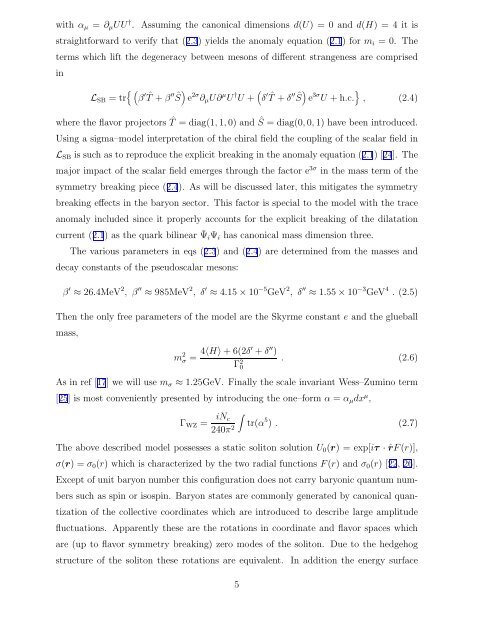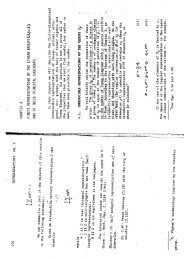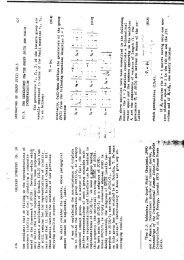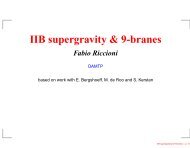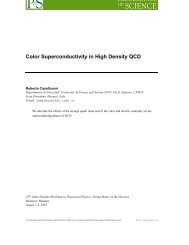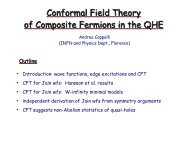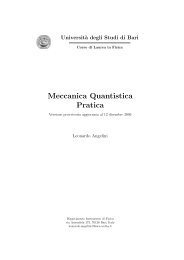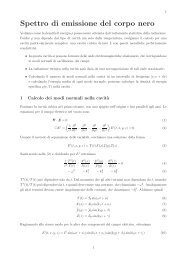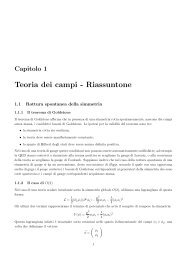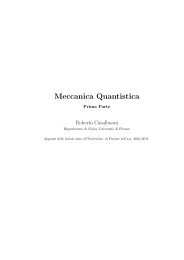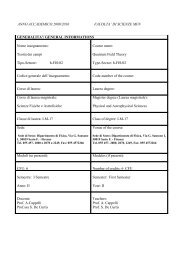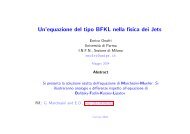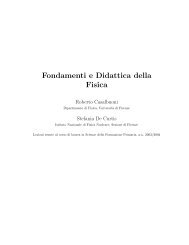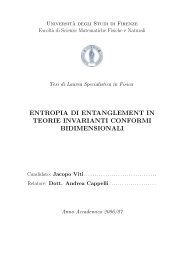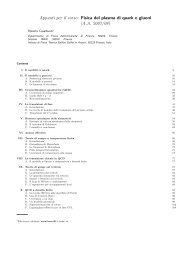arXiv:hep-ph/9804260 v2 16 Jun 1998 - Florence Theory Group
arXiv:hep-ph/9804260 v2 16 Jun 1998 - Florence Theory Group
arXiv:hep-ph/9804260 v2 16 Jun 1998 - Florence Theory Group
Create successful ePaper yourself
Turn your PDF publications into a flip-book with our unique Google optimized e-Paper software.
with αµ = ∂µUU † . Assuming the canonical dimensions d(U) = 0 and d(H) = 4 it is<br />
straightforward to verify that (2.3) yields the anomaly equation (2.1) for mi = 0. The<br />
terms which lift the degeneracy between mesons of different strangeness are comprised<br />
in<br />
<br />
LSB = tr β ′ <br />
T ˆ ′′<br />
+ β Sˆ e 2σ ∂µU∂ µ U † U + <br />
δ ′ <br />
T ˆ ′′<br />
+ δ Sˆ e 3σ U + h.c. <br />
, (2.4)<br />
where the flavor projectors ˆ T = diag(1, 1, 0) and ˆ S = diag(0, 0, 1) have been introduced.<br />
Using a sigma–model interpretation of the chiral field the coupling of the scalar field in<br />
LSB is such as to reproduce the explicit breaking in the anomaly equation (2.1) [24]. The<br />
major impact of the scalar field emerges through the factor e 3σ in the mass term of the<br />
symmetry breaking piece (2.4). As will be discussed later, this mitigates the symmetry<br />
breaking effects in the baryon sector. This factor is special to the model with the trace<br />
anomaly included since it properly accounts for the explicit breaking of the dilatation<br />
current (2.1) as the quark bilinear ¯ ΨiΨi has canonical mass dimension three.<br />
The various parameters in eqs (2.3) and (2.4) are determined from the masses and<br />
decay constants of the pseudoscalar mesons:<br />
β ′ ≈ 26.4MeV 2 , β ′′ ≈ 985MeV 2 , δ ′ ≈ 4.15 × 10 −5 GeV 2 , δ ′′ ≈ 1.55 × 10 −3 GeV 4 . (2.5)<br />
Then the only free parameters of the model are the Skyrme constant e and the glueball<br />
mass,<br />
m 2 σ = 4〈H〉 + 6(2δ′ + δ ′′ )<br />
Γ 2 0<br />
. (2.6)<br />
As in ref [17] we will use mσ ≈ 1.25GeV. Finally the scale invariant Wess–Zumino term<br />
[25] is most conveniently presented by introducing the one–form α = αµdx µ ,<br />
ΓWZ = iNc<br />
240π2 <br />
tr(α 5 ) . (2.7)<br />
The above described model possesses a static soliton solution U0(r) = exp[iτ · ˆrF(r)],<br />
σ(r) = σ0(r) which is characterized by the two radial functions F(r) and σ0(r) [22, 26].<br />
Except of unit baryon number this configuration does not carry baryonic quantum num-<br />
bers such as spin or isospin. Baryon states are commonly generated by canonical quan-<br />
tization of the collective coordinates which are introduced to describe large amplitude<br />
fluctuations. Apparently these are the rotations in coordinate and flavor spaces which<br />
are (up to flavor symmetry breaking) zero modes of the soliton. Due to the hedgehog<br />
structure of the soliton these rotations are equivalent. In addition the energy surface<br />
5


